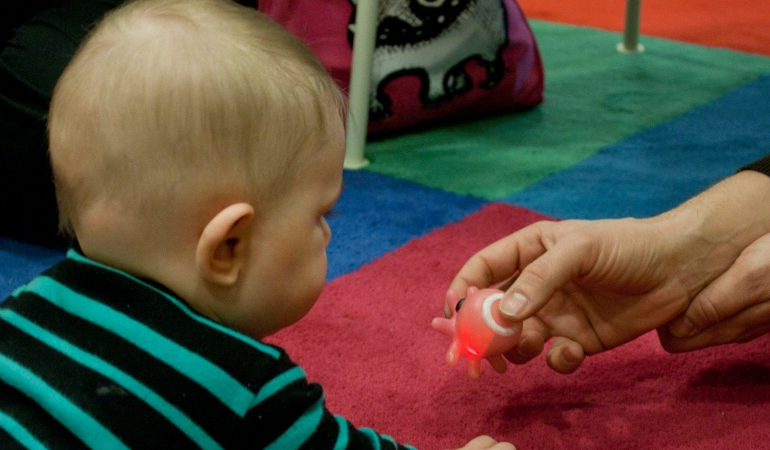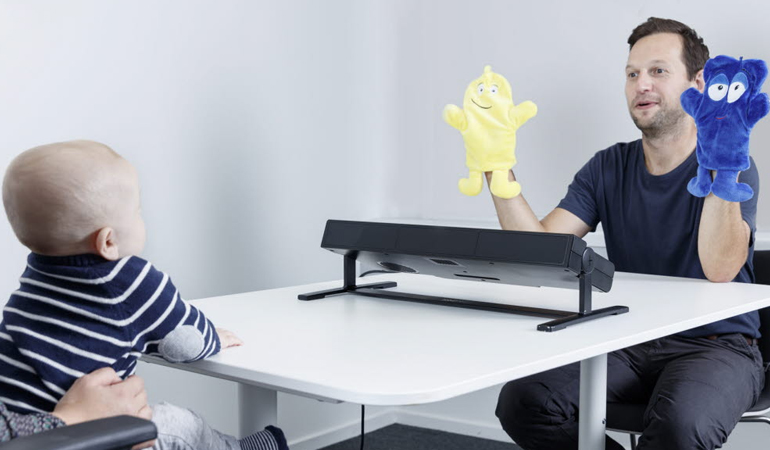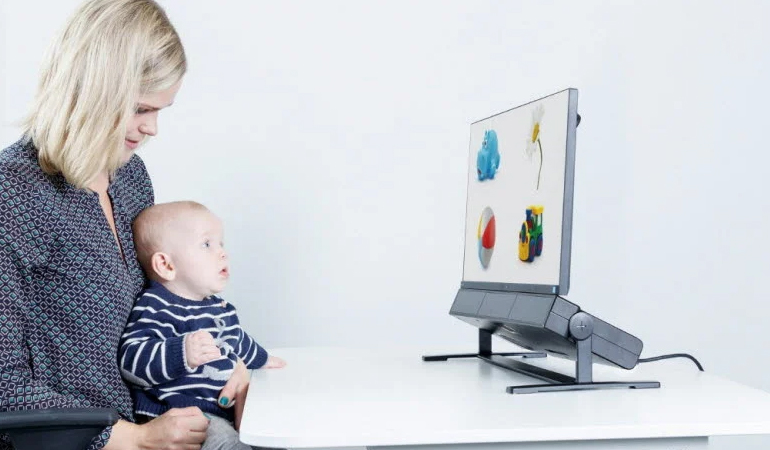Infant and child researchers use eye tracking to study perceptual, cognitive, and social emotional development from birth through early adulthood.
Eye tracking plays an important role in gathering data about how children interact with the people and the world around them. This technology is the most unobtrusive and reliable way to collect eye movement data from infants and children who typically can't sit still for long periods of time and have short attention spans. Using an eye tracker, developmental researchers can gain a deeper understanding of when specific capabilities emerge and how they change over time.

developmental psychology
Long before infants or young children can talk, eye tracking can provide detailed information about what they perceive and find compelling about the world.
Applicability of eye tracking within the field of developmental research is broad, including studies of:
• Developmental progression in infants' allocation of attention and interest
• Visual perception related to understanding and recall
• Ability to recognize motion signals
• Development of control of action
• Social interaction characteristics
• Oculomotor functions
• Language acquisition
Eye tracking is used to study the differences in social interaction and visual precursors to attention in social contexts between typically developing children and children with autism spectrum disorder. Researchers hope to discover the earliest indicators of autism in order to help diagnosis and inform interventions.


The diagnosis of autism depends on the judgments of symptoms listed in the diagnostic criteria. Gaze analysis is an additional tool for experts to use in the diagnosis process. In recent years, unobtrusive eye tracking systems without chin rests or movement-restricting headgear have become increasingly accurate. These advancements in technology have made collecting the gaze data of infants and young children as easy as studying adults.